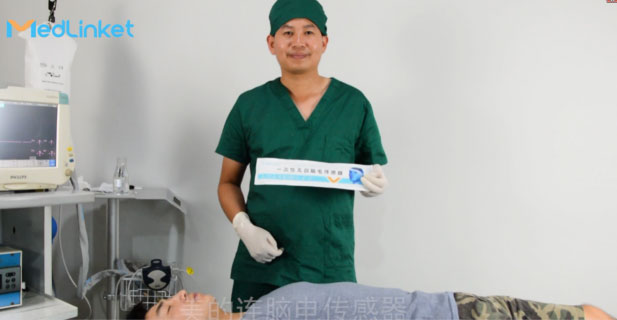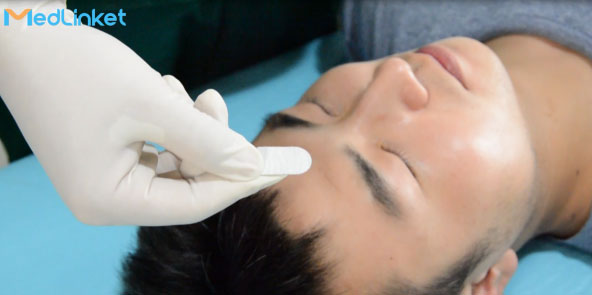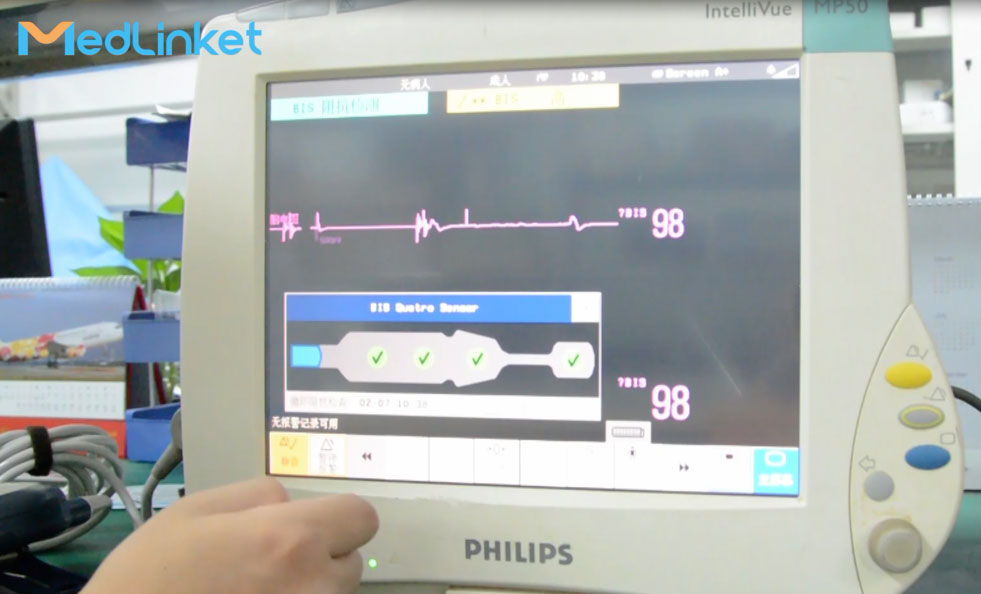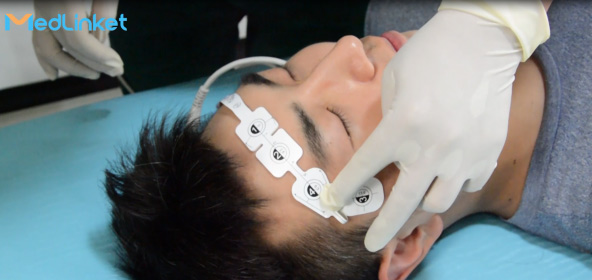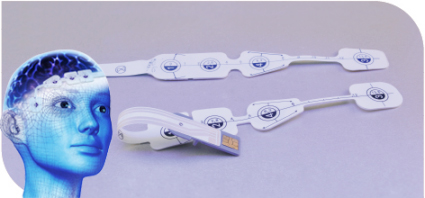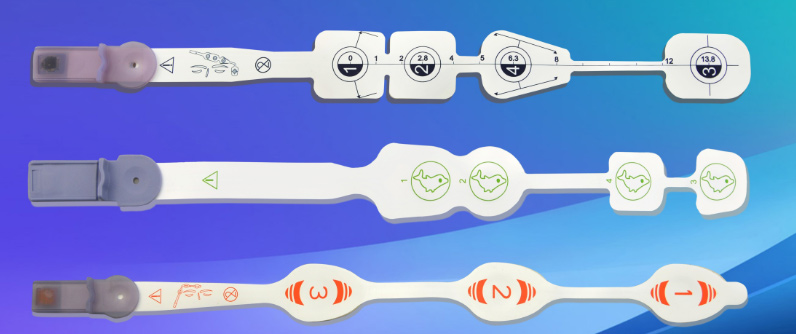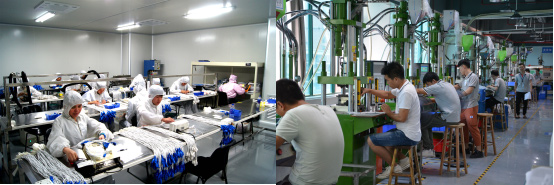"Doctor, will I not be able to wake up after anesthesia?" This is the biggest worry of most surgical patients before anesthesia. "If enough anesthetics are given, why can't the patient be anesthetized?" "If the anesthetic is given the lowest dose, why can't the patient wake up?" This is the greatest confusion for the anesthesiologist. The root of worry and confusion is the depth of anesthesia.
Definition of depth of anesthesia monitoring
Depth of anesthesia generally refers to the extent to which general anesthetics (in the unconscious state) suppress the central, circulatory, respiratory function and stress response under noxious stimulation to the minimum. The earliest depth of anesthesia was staged with classic ether anesthesia.
Divided into four periods
Phase 1
The amnesia period refers to the disappearance of consciousness and eyelash reflex after anesthesia is induced.
Phase2
During the excitement period, the patient is excited and restless, the respiratory cycle is not stable, and the reflexes are active, including strong stimulation, which can cause tearing and increased secretions.
Phase 3
During the surgical operation, the eyes are fixed, the pupils are reduced, the breathing cycle is stable, and the reflexes are inhibited.
Phase 4
The overdose period is also called bulbar palsy period. The respiratory cycle is severely inhibited, resulting in a drop in blood pressure, irregular breathing, and dilated pupils.
Too deep anesthesia leads to the inhibition of brain function, and will seriously affect the physiological stability of the circulatory system, leading to serious anesthesia accidents. It will also increase the cost of surgery due to overdose.
Shallow anesthesia is prone to intraoperative awareness, leading to unstable vital signs and severe postoperative anxiety in patients.
The depth of anesthesia can avoid complications such as intraoperative awareness, can accurately administer the appropriate amount of anesthetics, and avoid the waste of expensive anesthetics. It can also reduce the residence time or discharge time in the recovery room after anesthesia, thereby controlling medical costs.
Methods of monitoring the depth of anesthesia
The methods of monitoring the depth of anesthesia commonly used in clinical practice include audity evoked potential, AEPI, Bispectral index, BIS, Entropy, etc. auditory evoked potential, AEPI is the brain reactive electrical activity generated by auditory stimulation, reflecting the electrical activity from the cochlea to the cerebral cortex. BIS is to digitize the mixed information generated by dual-frequency analysis of brain wave power and frequency, and it is an intuitive reflection of the cerebral cortex.
BIS is based on the frequency spectrum and power spectrum of the electroencephalogram (EEG), adding a number of mixed information fitting figures obtained by nonlinear analysis of phase and harmonics. BIS is the only anaesthetic sedation depth monitoring index approved by the United States FDA. It can better monitor the functional state and changes of the cerebral cortex. It has a certain sensitivity to predict body movement, intraoperative awareness, and the disappearance and recovery of consciousness, and can reduce anesthetic drugs. BIS is currently a more accurate method for judging the level of sedation and monitoring the depth of anesthesia by EEG.
The depth of anesthesia is a comprehensive response to indicators such as the level of sedation, analgesia, and the degree of stimulus response, and the central parts of these indicators are not the same, so the depth of anesthesia must be monitored by multiple indicators and multiple methods.
Detection method of anesthesia depth monitoring
Observation and management of the depth of anesthesia is one of the main tasks during anesthesia. At present, Shenzhen Med-link Electronics Tech Co., Ltd has independently developed a disposable non-invasive EEG sensor after years of clinical verification, which is compatible with Mindray, Philips and other BIS modules. Brand anesthesia depth monitor, this disposable non-invasive anesthesia depth sensor product is positioned as a disposable product, mainly for the current clinical use of surgery to relieve the pain of patients, generally in general surgery operating room, intensive care unit For example, this type of disposable non-invasive anesthesia depth sensor is the most used
Medlinket's disposable depth ofanesthesia sensors is not only accurate in value, good in adhesion, and sensitive in measurement.
1.Accurate anesthesia allow patients to have consciousness during surgery and no
memory after surgery;
2. Improve recovery quality after surgery and shorten the time in recovery room;
3. Make postoperative consciousness more complete;
4. Reduce the chance of nausea and vomiting after surgery;
5. Give a guide on the sedative medicinal amount to maintain a smoother level of
sedation;
6. Use in Outpatient surgery anesthesia to shorten the observation time after surgery;
7. Use anesthetic more accurately and make anesthesia more stable while reducing the
anesthetic dose. Help anesthesiologists to closely monitor unconscious patients and provide timely control and treatment measures based on the monitoring situation.
All major distributors and agents are welcome to come and order, and ODM/OEM customized services are available! Shenzhen Med-link Electronics Tech Co., Ltd is a professional manufacturer of anesthesia and sedation depth detection accessories with 16 years of production experience; it has the strength of 35-person team research and development; can meet the design requirements of customers, private customized services, light customized services; Lean production mode, the cost price is controllable; the wholesale price is much lower than the original price, giving you greater profit margins; in addition to this product, there are other products in the anesthesia operating room, disposable blood oxygen, ECG, cuffs, etc. 3000+ Kinds of products, and a wide range of cooperative business!
Shenzhen Med-link Electronics Tech Co., Ltd
Direct Line: +86755 23445360
Email: marketing@med-linket.com
Web: http://www.med-linket.com
.
Post time: Sep-22-2020

